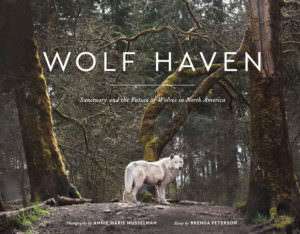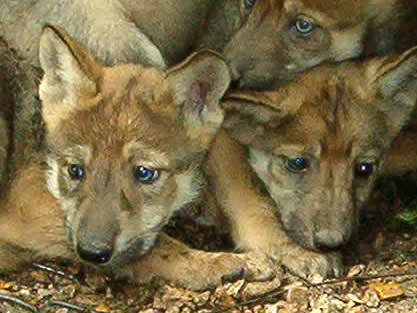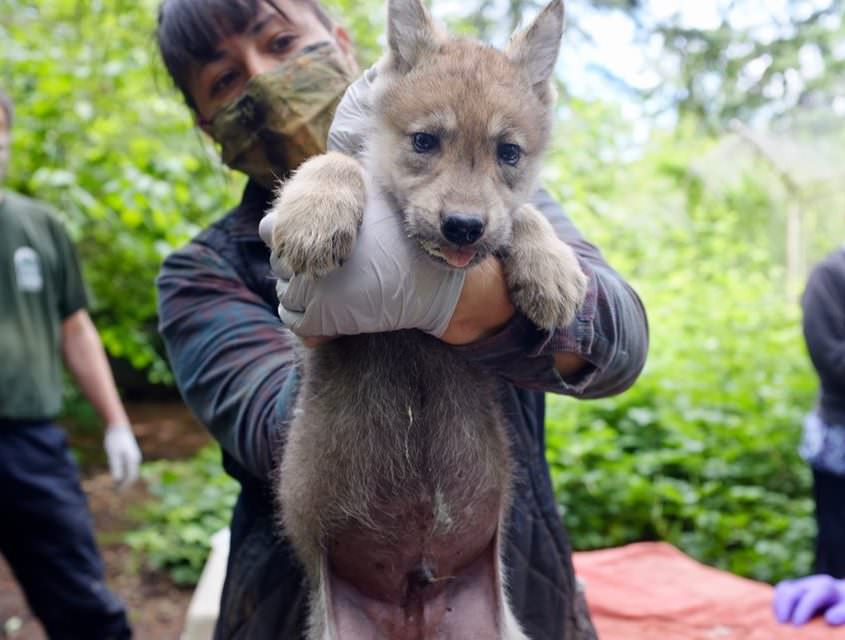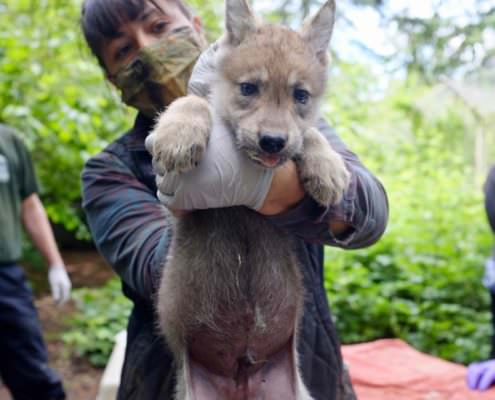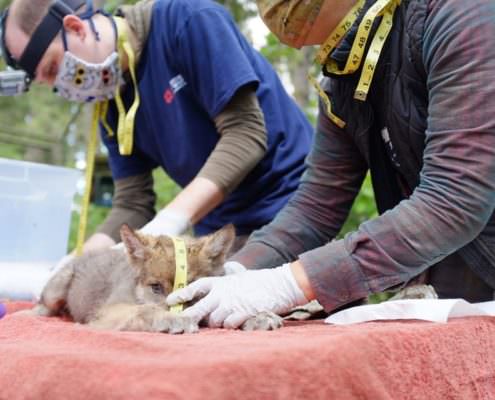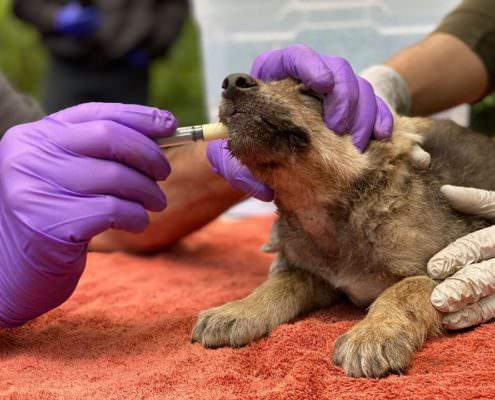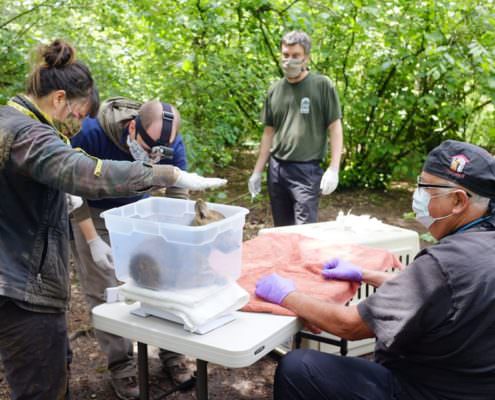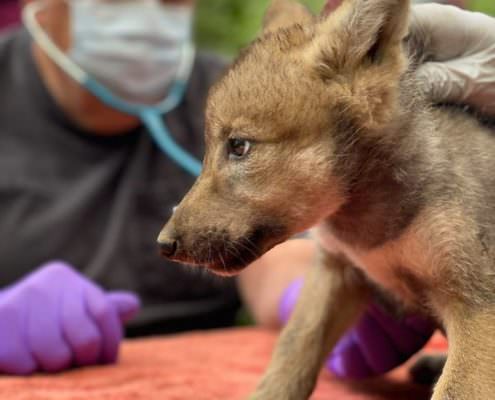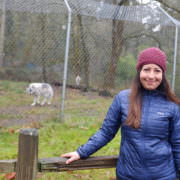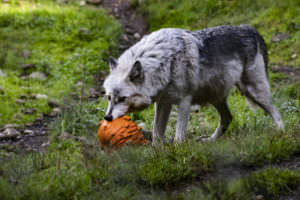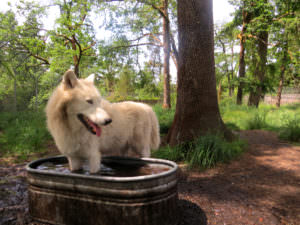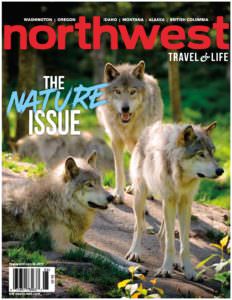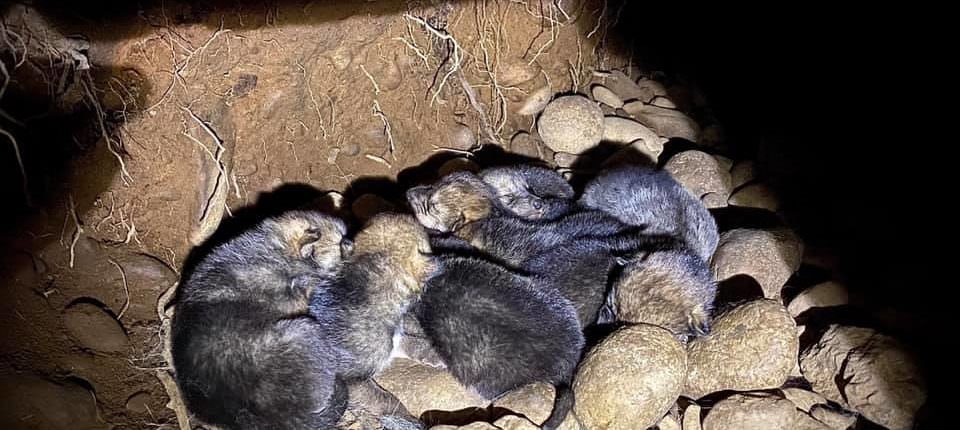
Furry pile of pups sleeping in their underground den.
Mexican wolf parents M1360 (Kochi) and F1422 (Vida) had a litter of nine pups at Wolf Haven on April 30. Although Wolf Haven does not breed the rescued wolves who call our sanctuary home – we wouldn’t want to contribute to the tragedy of wild animals living in captivity – we occasionally have litters of species who have been designated as critically endangered: red wolves (Canis rufus) and Mexican wolves (Canis lupus baileyi).
Association of Zoos and Aquarium (AZA) Species Survival Plan (SSP) programs are cooperative animal programs designed to oversee the population management of select species in captivity in order to enhance their conservation in the wild.
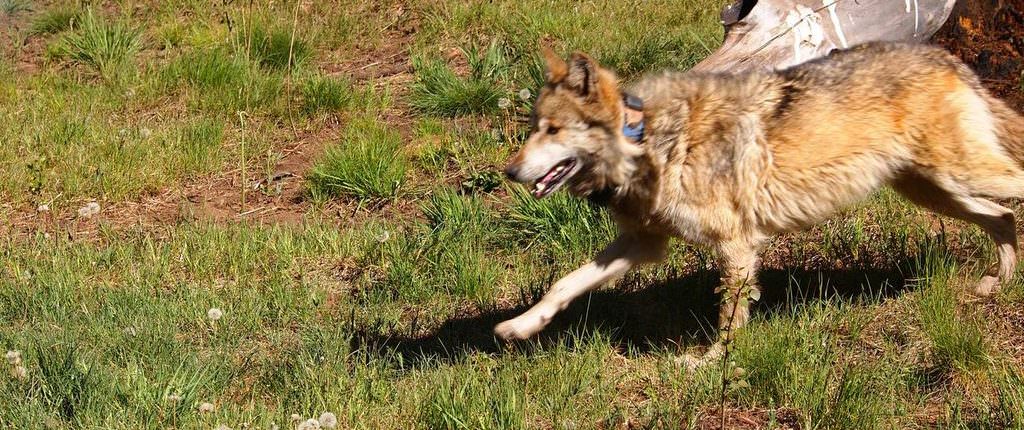
One of two collared wolves release into the wild in 2013.
Mexican wolves were declared endangered in 1976. Since 1994, Wolf Haven has actively participated in their recovery, both as a captive breeding facility and one of only three pre-release sites in the US. Toward that end, there have been 10 litters of Mexican wolves born at Wolf Haven, the first one arriving in 1996. Three families from Wolf Haven have been released into the wild, with the Hawk’s Nest family group being among the first three packs of Mexican gray wolves released into the federally designated reintroduction area in Arizona’s Apache National Forest.
From our first “official” photo of Vida and Kochi’s litter, all in a furry pile in their den, to their first required health care check six weeks later, these five males and four females have certainly grown. They will receive their second round of inoculations, deworming and also get microchips later this month. In the meantime, the nine pups all appeared healthy and robust, as you can see at their first checkup.

